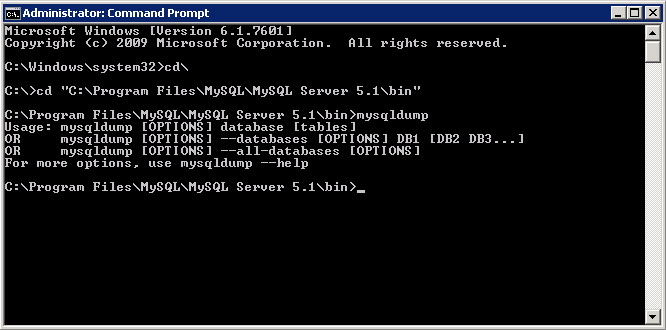
How to Backup and Restore MySQL Database We assume that you already have MySQL installed on Linux system with administrative privileges and we assume that you already have a small amount of knowledge on MySQL. If you don’t have MySQL installed or don’t have any exposure to MySQL then read our articles below. • • How to Backup MySQL Database?

To take a backup of MySQL database or databases, the database must exist in the database server and you must have access to it. The format of the command would be. # mysqldump -u [username] –p[password] [database_name] >[dump_file.sql] The parameters of the said command as follows.
• [username]: A valid MySQL username. • [password]: A valid MySQL password for the user. • [database_name]: A valid Database name you want to take backup.
Sep 11, 2013. Backup Methodology. Most backups of MySQL databases in this guide are performed using the mysqldump tool, which is distributed with the default MySQL server installation. We recommend that you use mysqldump whenever possible because it is often the easiest and most efficient way to take database. May 19, 2015. This example will be a partial backup because I am not going to backup the default databases for MySQL (which are created during installation) – mysql, test, PERFORMANCE_SCHEMA and INFORMATION_SCHEMA. Note: mysqldump does not dump the INFORMATION_SCHEMA database by default.
• [dump_file.sql]: The name of backup dump file you want to generate. How to Backup a Single MySQL Database?
Whatsapp Download For Samsung Gt S 7262 there. To take a backup of single database, use the command as follows. The command will dump database [ rsyslog] structure with data on to a single dump file called rsyslog.sql. # mysqldump -u root -ptecmint rsyslog >rsyslog.sql How to Backup Multiple MySQL Databases? If you want to take backup of multiple databases, run the following command. The following example command takes a backup of databases [ rsyslog, syslog] structure and data in to a single file called rsyslog_syslog.sql. # mysqldump -u root -ptecmint --databases rsyslog syslog >rsyslog_syslog.sql How to Backup All MySQL Databases?
If you want to take backup of all databases, then use the following command with option –all-database. The following command takes the backup of all databases with their structure and data into a file called all-databases.sql. # mysqldump -u root -ptecmint --all-databases >all-databases.sql How to Backup MySQL Database Structure Only? If you only want the backup of database structure without data, then use the option –no-data in the command. The below command exports database [ rsyslog] Structure into a file rsyslog_structure.sql. # mysqldump -u root -ptecmint -–no-data rsyslog >rsyslog_structure.sql How to Backup MySQL Database Data Only? To backup database Data only without structure, then use the option –no-create-info with the command.
This command takes the database [ rsyslog] Data into a file rsyslog_data.sql. # mysqldump -u root -ptecmint --no-create-db --no-create-info rsyslog >rsyslog_data.sql How to Backup Single Table of Database? With the below command you can take backup of single table or certain tables of your database. For example, the following command only take backup of wp_posts table from the database wordpress. # mysqldump -u root -ptecmint wordpress wp_posts >wordpress_posts.sql How to Backup Multiple Tables of Database?
If you want to take backup of multiple or certain tables from the database, then separate each table with space. # mysqldump -u root -ptecmint wordpress wp_posts wp_comments >wordpress_posts_comments.sql How to Backup Remote MySQL Database The below command takes the backup of remote server [ 172.16.25.126] database [ gallery] into a local server. # mysqldump -h 172.16.25.126 -u root -ptecmint gallery >gallery.sql How to Restore MySQL Database? In the above tutorial we have seen the how to take the backup of databases, tables, structures and data only, now we will see how to restore them using following format. # # mysql -u [username] –p[password] [database_name].
SQLite Download Page Pre-release Snapshots (2.46 MiB) The source code, the source code, configure/make scripts for unix, and a Makefile.msc for Windows. See the for more information. (sha1: a1e4c9fd31fb06e1a84aeb11a9c4b316ddba7748) Source Code (1.98 MiB) C source code as an, version 3.21.0. (sha1: ebe33c20d37a715db952cd560f2452) (2.45 MiB) C source code as an. Also includes a 'configure' script and makefiles for the.